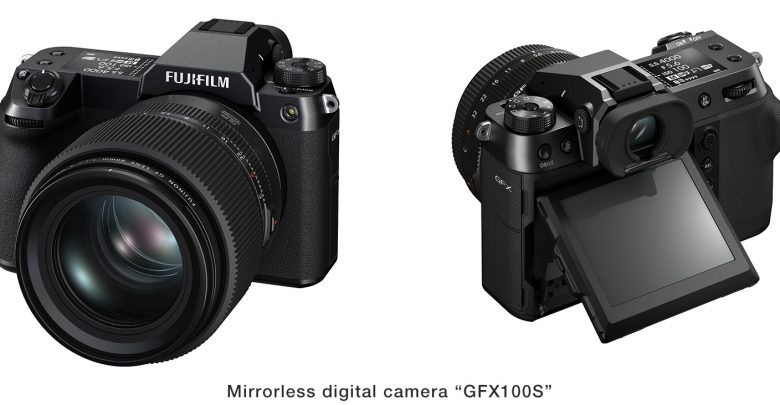
Fujifilm has announced the GFX100S, a follow up to their 100MP GFX100. What Fujifilm has essentially done is to shrink the GFX100 and massively reduce the price. The Fujifilm GFX100S is the latest member of the company’s medium format GFX series – and thanks to a relatively small body and price tag, it could be the range’s breakthrough camera for professionals.
Medium Format goes on a diet
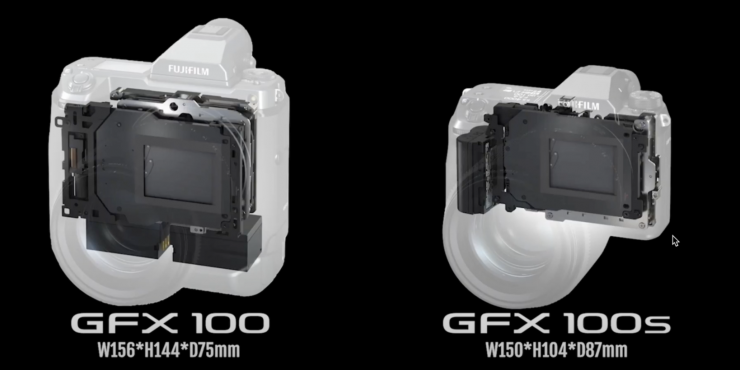
Fujifilm has shrunk the camera down to just 1.98 lb / 900g, which means it only weighs a few hundred grams more than most compact full-frame mirrorless cameras. As a comparison, the GFX100 weighs 3.08 lb / 1400 g (Body with Viewfinder).
Same Sensor as GFX100
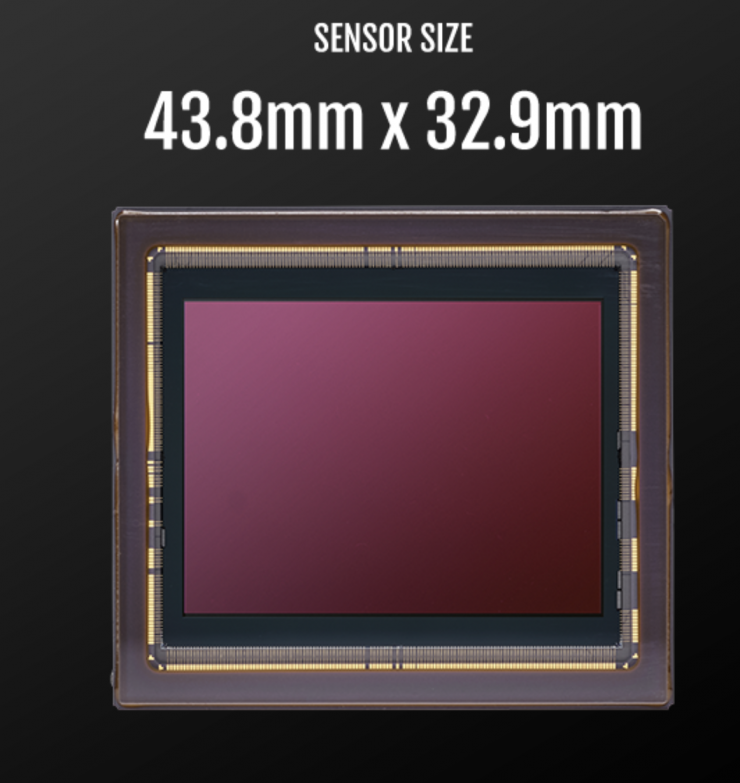
Fujifilm has taken the exact same 102MP (43.8 x 32.9 mm) BSI CMOS sensor that is found in the GFX100.
Like the Fujifilm GFX100, the GFX100S has a monstrous 102MP sensor, but it crams that along with a range of other improvements into a body that’s smaller than the Fujifilm GFX 50S, a 51.4MP model that it surprisingly replaces.
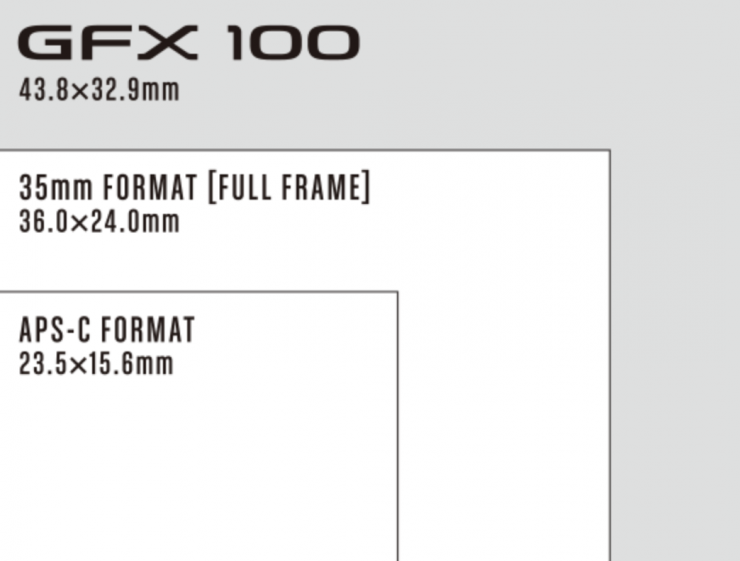
Fujifilm, which has been working on medium format cameras since the film era.
With medium format shooting offering peerless dynamic range and low light performance, even compared to full-frame beasts like the Sony Alpha 1, it could be a very exciting prospect indeed for professional shooters.
Key specifications
- 102MP BSI-CMOS 44 x 33mm medium format sensor
- Image stabilization system rated at up to 6EV
- Continuous shooting at up to 5 fps with C-AF
- 4K video at up to 30p with HDMI output of 10-bit 4:2:2 or 12-bit Raw footage
- Multi-shot 400MP mode for static subjects
- 2.36M-dot rear touchscreen with two-axis tilt
- Fixed 3.69M-dot OLED EVF with 0.77x equiv. magnification
- Lossy, lossless or uncompressed Raw in 16 or 14-bit
- Twin UHS-II SD card slots
- NP-W235 battery, rated at 460 shots
Other features:
The camera is built around the same 102MP medium format sensor as the GFX100 and has Fujifilm’s latest X-Processor 4. But Fujifilm is claiming some big improvements for the autofocus performance, with the AF tracking and Face/Eye detection both upgraded.
More compact body
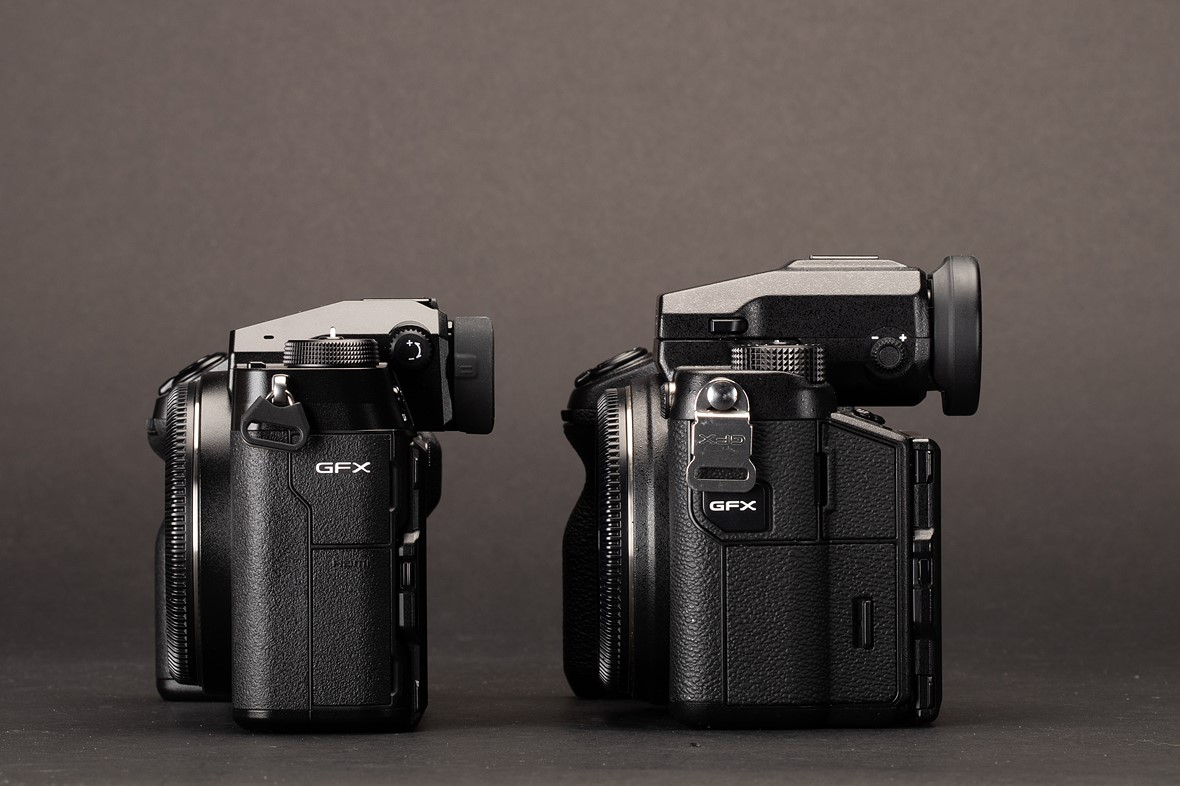
Fujifilm says the addition of the image stabilization system meant that it was more practical to make the GFX 100S into a DSLR-shaped camera, rather than the more rangefinder-like layout of the GFX 50R. But a lot of the downsizing efforts that went into the 50R have been applied here, resulting in a camera that’s appreciably smaller than the original GFX 50S.
The GFX 100S has a control layout very similar to that of the original, dual-grip GFX 100, with a large LCD top plate display and a comparable number of custom buttons. A conventional mode dial and movie/stills switch replace the button-within-a-dial arrangement on the camera’s left shoulder.
Image stabilization
Core to the GFX 100S is the inclusion of in-body image stabilization. Just as Fujifilm has been able to continue to miniaturize the IS systems used in its X-H1, X-T4 and X-S10 models, it’s also been able to reduce the size of the mechanism from the original GFX 100 to allow it to fit in a smaller body.
Despite the size reduction, the new mechanism is more effective than the one that precedes it: rated to correct up to 6EV of shake. This is half a stop more than the GFX 100’s rating and is achieved with more lenses, giving a rated 1EV improvement with most combinations. On top of this, the new system can synchronize with OIS lenses to maintain this level of correction even with longer focal lengths. This Sync IS system uses both lens and body IS to correct pitch and yaw, just as Panasonic, Olympus and Canon systems do.
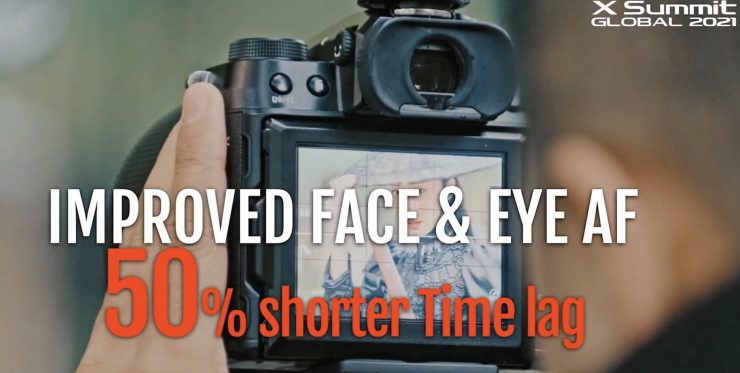
The image stabilization mechanism is also used to provide a sixteen-shot high-resolution mode. This moves the sensor between each shot, first to ensure that a red, green and blue pixel has been captured for each location, then to do the same again at a slight offset. This both boosts the chroma resolution and the overall pixel count of the image. However, in our experience with the GFX 100, we found that the lack of any motion correction means it really only works for completely static subjects, such as artwork reproduction.
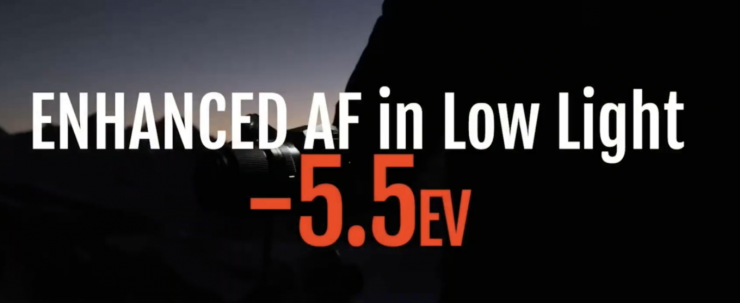
Video recording
The GFX100Ssupports DCI and UHD 4K video recording at 4:2:0 10-bit internally, 4:2:2 10-bit via HDMI, or raw 12-bit if recording externally. An F-log gamma setting can also be used for more advanced color grading during post-production.
It would have been nice to have seen Fujifilm upgrade the internal recording options to full 4:2:2 10-bit, but alas it is very much the same recording options that are available on the GFX100.
It also supports all film simulations, including “ETERNA,” which reproduces Fujifilm’s cinema film. It also supports the digital cinema aspect (17: 9) and H.265 / H.264 compression codecs, and the maximum bit rate can be selected of up to 400 Mbps.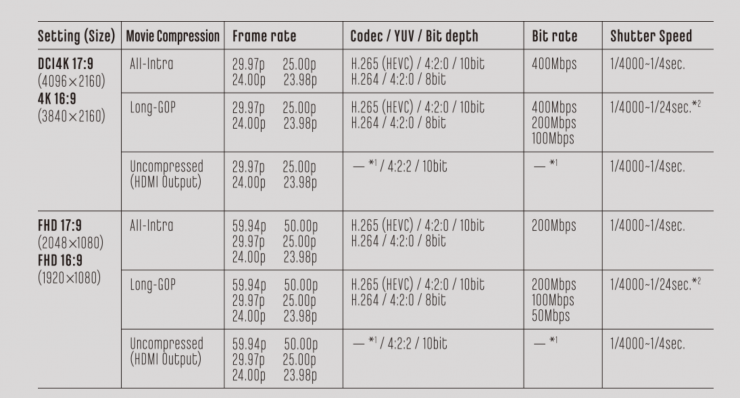
Eight-direction control nub
The four-direction joystick that’s featured on previous GFX cameras has been replaced by a wider, flatter textured nub, that allows diagonal control as well as vertical and horizontal.
Its lower profile makes it easy to nudge the AF point around or navigate menus without too much risk of accidentally pressing it inwards which, as before, resets the AF point or accepts the current menu setting.
Additional Film Simulation mode
The GFX 100S gains a 13th Film Simulation mode: Nostalgic Neg. Fujifilm says this is based on the distinctive look achieved by American color film photographer Stephen Shore.
‘Nostalgic Neg’ aims to offer slightly amber-tinted highlights, cyan-ish skies and saturated reds along with deep shadows to provide another option for retro-looking images. As usual, the effect is relatively subtle, giving an attractive option without spilling into overly intense ‘Instagram-filter’ territory.
The following Film Simulation Modes are available:
- Nostalgic Neg. effect
- Provia
- Velvia
- Astia
- Classic Chrome
- Classic Neg
- Pro Neg. Hi
- Pro Neg. Standard
- Eterna
- Eterna Bleach Bypass
- Acros
- Monochrome
- Sepia
Additionally, Grain Effect can be adjusted as well as Classic Chrome effect to fine-tune the look of imagery.
Battery:
The move to the smaller body format also sees the GFX 100S make use of a smaller battery, compared to the GFX 100. It uses the same W235 battery first introduced with the X-T4. It’s a fair bit smaller than NP-T125 used in the previous GFX bodies. Despite the reduction in physical size and electrical capacity, the GFX 100S is rated at a pretty reasonable 460 shots per charge using the LCD, per CIPA standard tests.
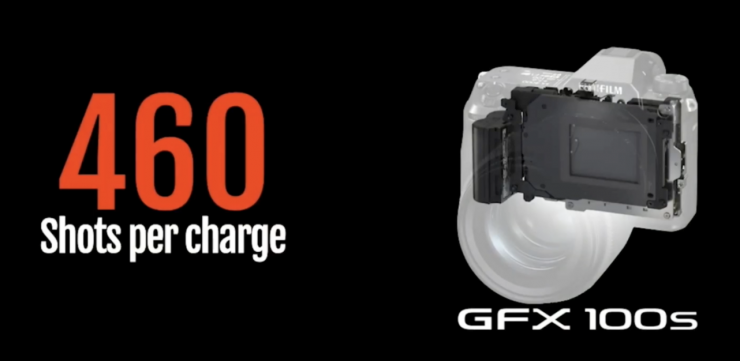
As always with CIPA ratings, the number reflects very demanding use, and we’ve found we regularly get more than twice the stated number of shots from most cameras. However, the numbers are broadly comparable between mirrorless cameras, so it’s reasonable to expect you’ll get more than 1/2 as many shots out of the GFX 100S as you would from the 800-shot-per-charge rated twin-battery GFX 100. This is likely to be enough for a lot of situations, though wedding photographers are likely to find themselves wanting to pocket a spare. A two-battery charger is available for such users.
The X100S will recharge over its USB-C socket but there are no electrical contacts to allow a vertical grip option to enhance the battery life or provide a more substantial portrait grip: there’s the GFX 100 for that.
Body and controls
The GFX 100S uses a similar control approach to that of previous GFX cameras, primarily relying on its twin command dials for most control, and using an exposure compensation button rather than a dedicated dial (though, with a bit of work, you should be able to assign it as an option when you press the rear dial).
The GFX 100S fits nicely in the hand, with a thin layer of dense rubber providing a good amount of traction to a well-shaped hand grip, though photographers with larger hands may find the middle-finger indentation a little too small and close to the front of the camera. The solid grip is important because although the camera is smaller than the likes of a Nikon D850, it can start to get quite heavy once you’ve mounted something like the GF 110mm F2 lens on the front.
The top display panel can be set to show shooting information, a graphic representing shutter speed and ISO dials or a histogram. The camera maintains separate settings for stills and video, and can show black on white if you find it clearer than white on black. A small ‘lamp’ button on the side of the viewfinder illuminates the panel.
Viewfinder
The GFX 100S, unlike the GFX 100 or GFX 50S, has a fixed built-in viewfinder. It’s a 3.69M-dot OLED panel with 0.77x magnification (with a 50mm equivalent lens mounted). This is a pretty big display with pretty decent resolution. ‘Boost’ modes in the camera’s power settings let you increase either the refresh rate or the resolution.
Interface:
The rest of the interface is very similar to that of recent Fujifilm models. Buttons can be customized by holding down the ‘Disp/Back’ button, and the ‘Q’ menu can be modified without the need to delve into the full menus. Menu options let you decide whether the Q menu is displayed on a grey background or overlaid on top of the camera’s live view. Different contrast levels for the interface and menus are available, including a night vision preserving red and black color scheme for working in extreme low light conditions where it’s easy to get dazzled.
Fujifilm GFX100S release date and price
The Fujifilm GFX100S will be available to buy from the end of February for $5,999 / £5,499 / AU$9,499.
That’s not exactly ‘affordable’ for most photographers (even professionals), but it’s important to put that price tag in context. After all, this is the first time a 102MP medium format camera has been in that ballpark.
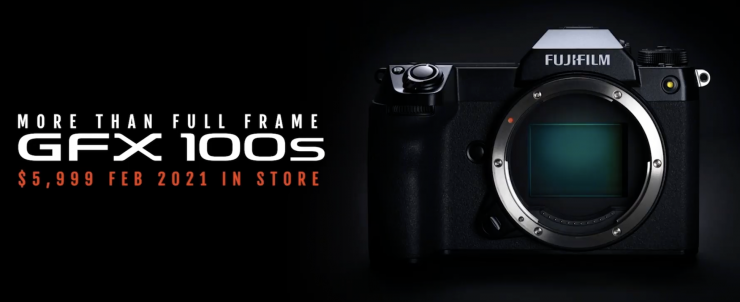
The Fujifilm GFX100, for example, cost US $9,999 before tax (AU$16,499, about £7,920) when it arrived in June 2019. And the outgoing Fujifilm GFX 50S, which ‘only’ had a 51.4MP sensor, was only slightly less at $5,499 / £3,999 / AU$9,999.
The GFX100S’ price tag also brings into competition with Sony’s latest full-frame models, which have smaller sensors, The 61MP Sony A7R IV launched for $3,500 / £3,500 / AU$5,699, but the new Sony Alpha 1 recently launched with a price tag of $6,500 / £6,500 / AU$10,499.
In this sense, then, the Fujifilm GFX100S and Sony Alpha 1 could be battling it out for the attention of professional photographers who need serious resolution.
